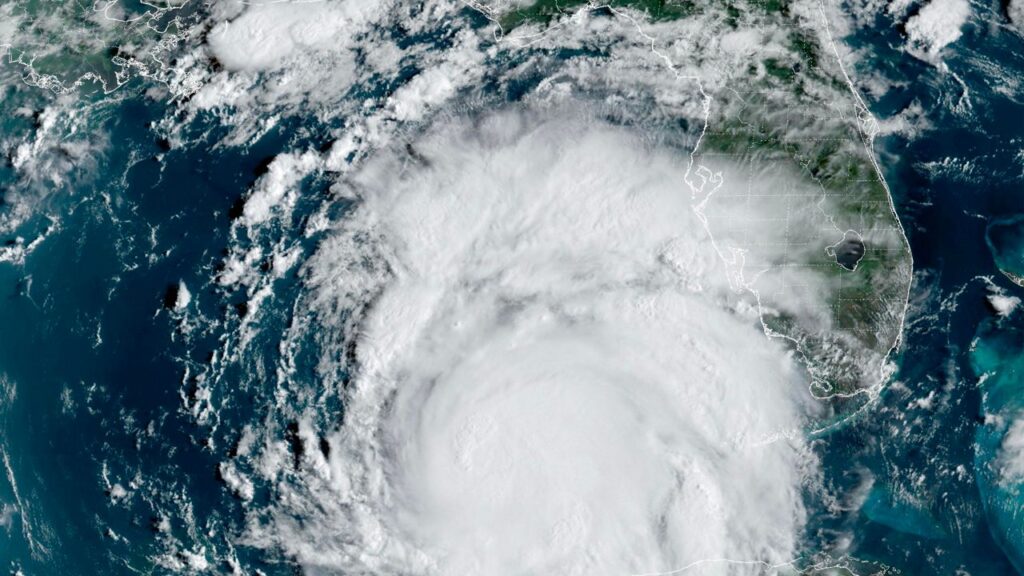
Our nation is buckling up for a new tropical storm/hurricane season. Hurricane Beryl has become the earliest forming Category 5 hurricane on record. After bringing catastrophic destruction in the Caribbean, Hurricane Beryl made its way through the Gulf of Mexico as a Category 1 hurricane and made landfall near Matagorda, Texas. Two days after US landfall, the post-tropical storm made its way to Ontario, Canada. The NOAA is forecasting 17 to 25 named storms in the Atlantic. Of those, eight to thirteen are forecasted to become hurricanes, four to seven of those storms could potentially become major 3, 4 or 5 category hurricanes.
While some residents won’t get the brunt of the storms, many still feel the effects. Surrounding regions often have power outages that can take days to weeks to restore.
HOW STORMS FORM
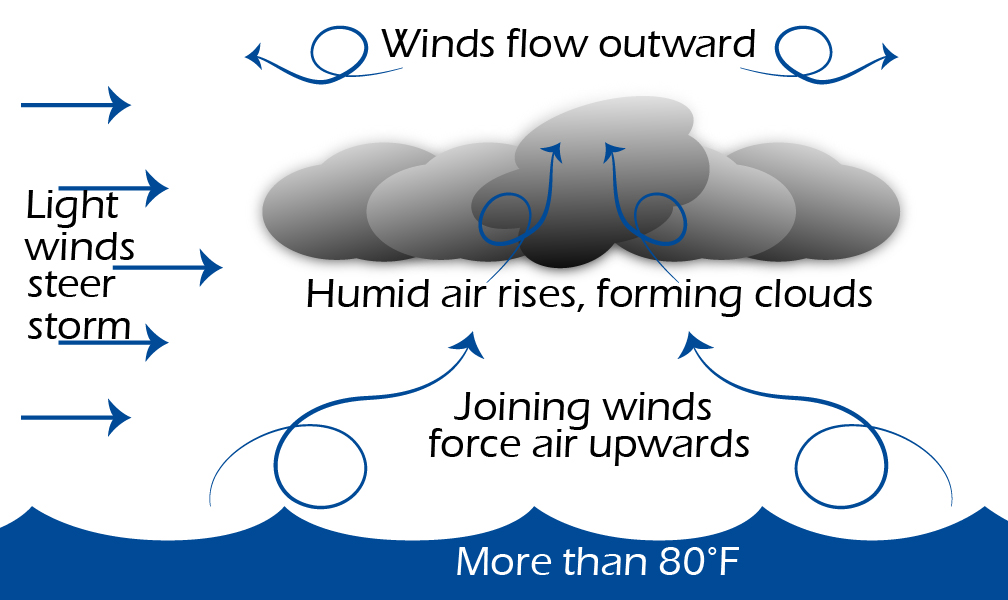
Often, tropical storms begin as a tropical wave. This low pressure area moves through the tropics, that can form showers and thunderstorms. As these storms continue to move across the ocean, warm air rises into the storm.
The air rushing into the system rises and cools, forming droplets in the clouds, which feeds more heat to power the storm. Winds then steer the storm.
RISKS
Storm surges
This is when water is pushed towards the shore, rising the water level creating significant flooding. A storm surge
doesn’t just affect the coasts, it can also travel inland through rivers and bays.
Flooding
A lot of rainfall in a short amount of time can create significant flooding. Flooded streets pose a deadly hazard for those traveling on the roads. This is why it is important to evacuate before the storms make landfall.
Winds
You hear forecasters talk about hurricane categories. Each category has a range of wind speeds. While all hurricane
force winds are life-threatening, the higher the category, the more catastrophic the damage will be.
Saffir-Simpson Hurricane Wind Scale
| CATEGORY | WIND SPEED | RESULT |
|---|---|---|
| 1 | 74-95 mph | Some Damage |
| 2 | 96-110 mph | Extensive Damage |
| 3 | 111-129 mph | Devastating Damage |
| 4 | 130-156 mph | Catastrophic Damage |
| 5 | 157 mph or more | Catastrophic Damage |
Tornadoes
Thunderstorms most often occur well away from the center of a hurricane, but sometimes can develop around the eyewall.
Waves
Rip tides can be deadly from distant storms. Always be aware of the weather further away, just because it is nice on the beach where you are, doesn’t always mean it is safe.
PREPARATION
First and foremost, everyone’s safety is the priority. Please listen to evacuation notices. Have an evacuation plan before you need it. If you are not in the path, but could still live with the aftermath, we want you to be prepared. Having an emergency kit is an essential, for all homes.
Water
Storms can impact the safety of city water with contaminants or could be shut off. Having a stock of water is a necessity.
Non-Perishable food
Food that have a longer shelf life, such as beans, nuts, peanut butter, granola bars, powdered milk, etc.
Solar-Powered Phone Chargers
With cellular phones being the most popular forms of communication, having non-electrical ways to keep your phone
powered is key to stay connected with emergency systems.
First Aid Kit
Your kit should be more than a few Band-Aids. Invest in a complete kit so you will be prepared for injuries.
Personal Needs
Take in consideration of you and your family’s needs. Make sure you have enough of your medication or other health
related items you may need.
When stocking up on food and water, it is always a good idea to periodically check your inventory’s expiration dates.
Even bottled water expires within a year. Games, books, and puzzles are other items to have on hand. Let’s face it, without technology, we can get bored pretty easily. Be aware of your personal circumstances too when getting an emergency kit together.
PRECAUTIONS
Power outages can affect appliances that remain plugged in when power is restored. This could damage the equipment and/or be unsafe for use afterwards.
Small Electronics
TVs, computers, game consoles, and other small appliances should be unplugged until power is restored.
Large Appliances
Refrigerators and freezers should remain plugged in. Food in the refrigerator is safe for only four hours without
electricity. To reduce loss of food, keep doors closed as much as possible and add blocks of ice. Discard perishable foods if they have reached 40°F or higher.
Surge Protectors
When power comes back on, the network voltage may be higher or lower than the ideal amount. A surge happens
when voltage coming in is too high and it can damage appliances and electronics. Surge protectors are recommended
for appliances or electronics that cannot be unplugged.
INVESTING IN A GENERATOR
A generator can pay for itself, especially if you live in an area that is prone to power outages. For instance, spoiled food in the refrigerator will have to be thrown away meats. Electronics and appliances could get damaged from a power surge.
There are different types of generators to consider:
PORTABLE
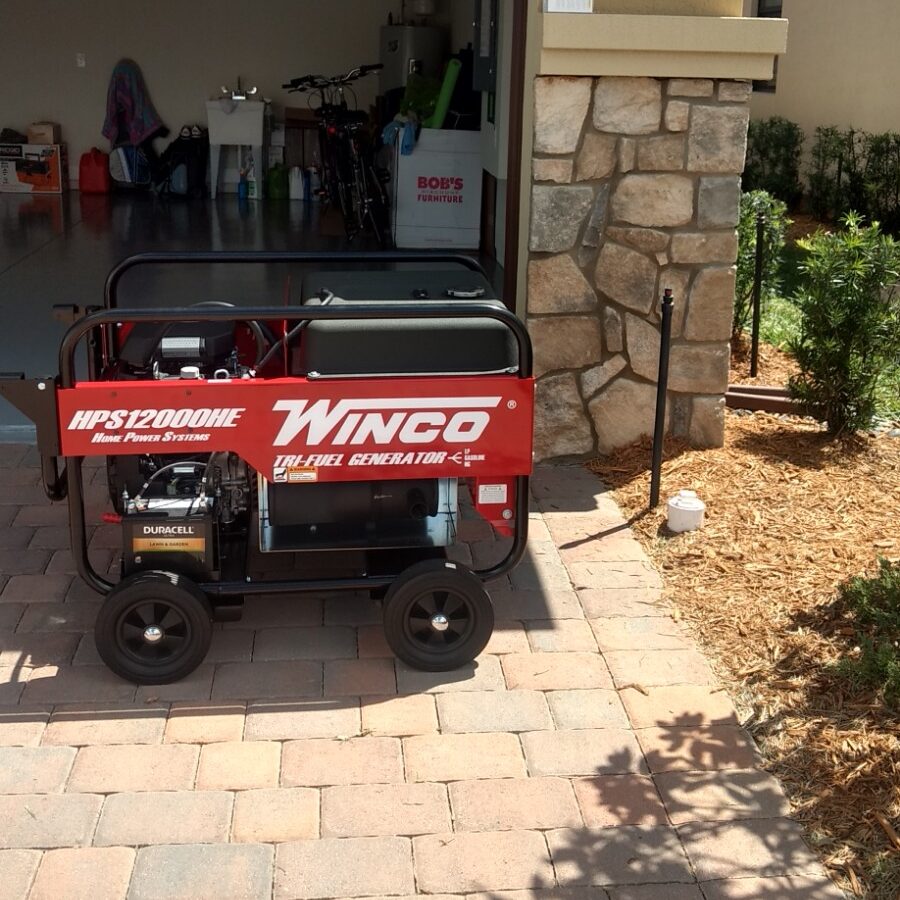 Portable generators can be light enough to move around, or have the ability to attach a wheel kit. These are also great if you need power around the house for odd jobs or for a home shop. You can find portable generators that use fuels other than gasoline, such as propane or natural gas, too.
Portable generators can be light enough to move around, or have the ability to attach a wheel kit. These are also great if you need power around the house for odd jobs or for a home shop. You can find portable generators that use fuels other than gasoline, such as propane or natural gas, too.
STANDBY
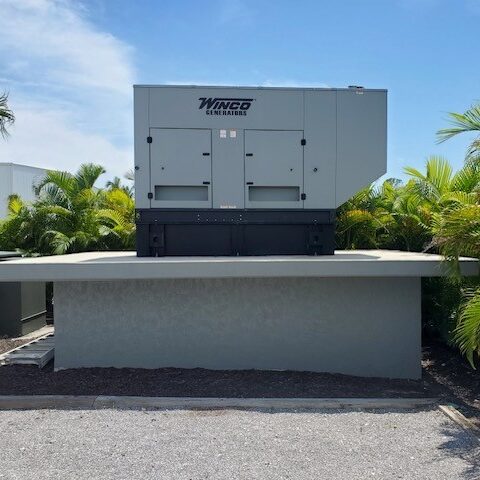 A permanently installed generator can give you piece of mind if the power goes out while you are asleep or away from home. With the addition of a transfer switch, a standby generator will start running once the power goes out. Home
A permanently installed generator can give you piece of mind if the power goes out while you are asleep or away from home. With the addition of a transfer switch, a standby generator will start running once the power goes out. Home
units are typically run on natural gas or propane, but diesel is another fuel source option.
PTO
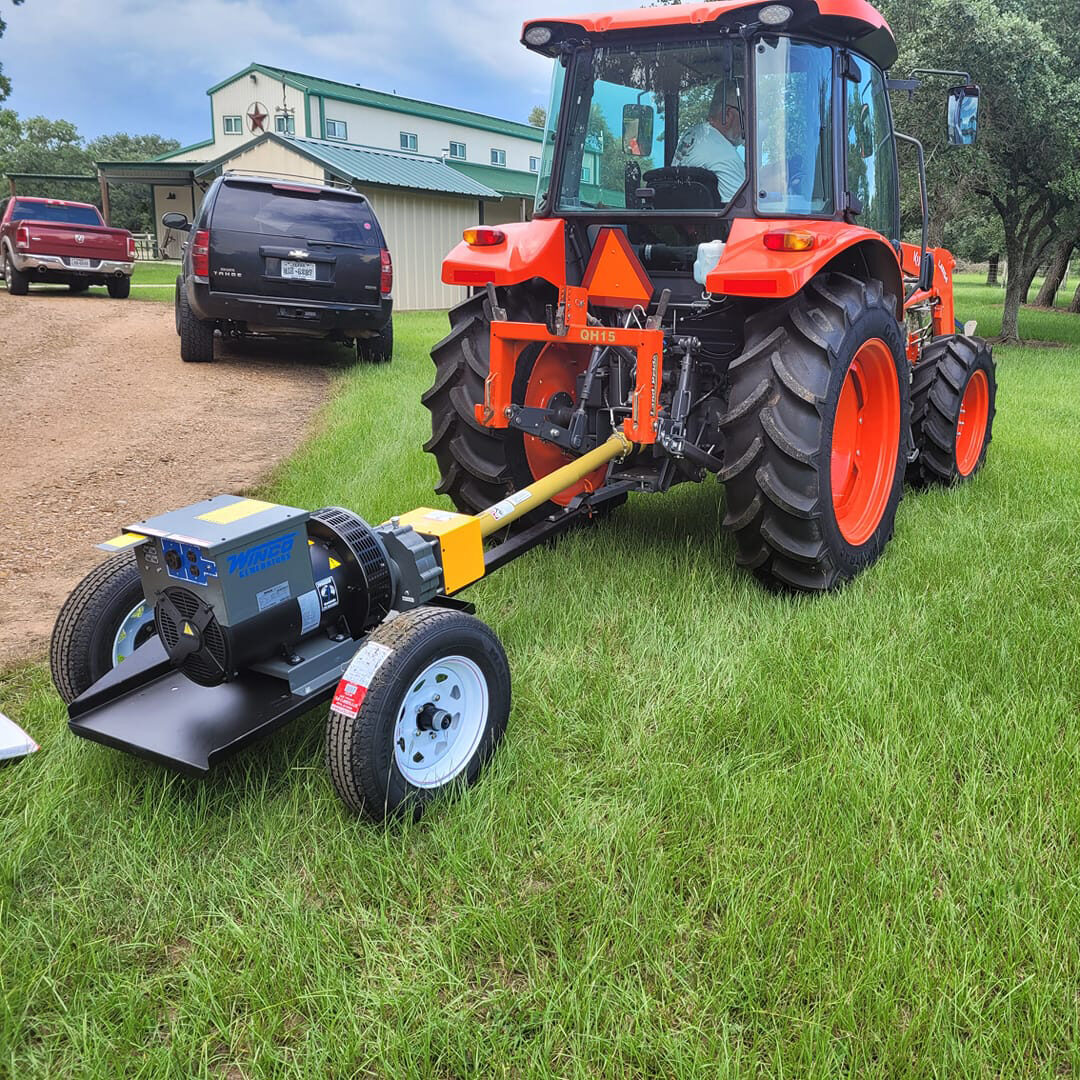 For those who already have a tractor or are in the market for one, a PTO generator can be a cost effective way to get portable power.
For those who already have a tractor or are in the market for one, a PTO generator can be a cost effective way to get portable power.
MOBILE
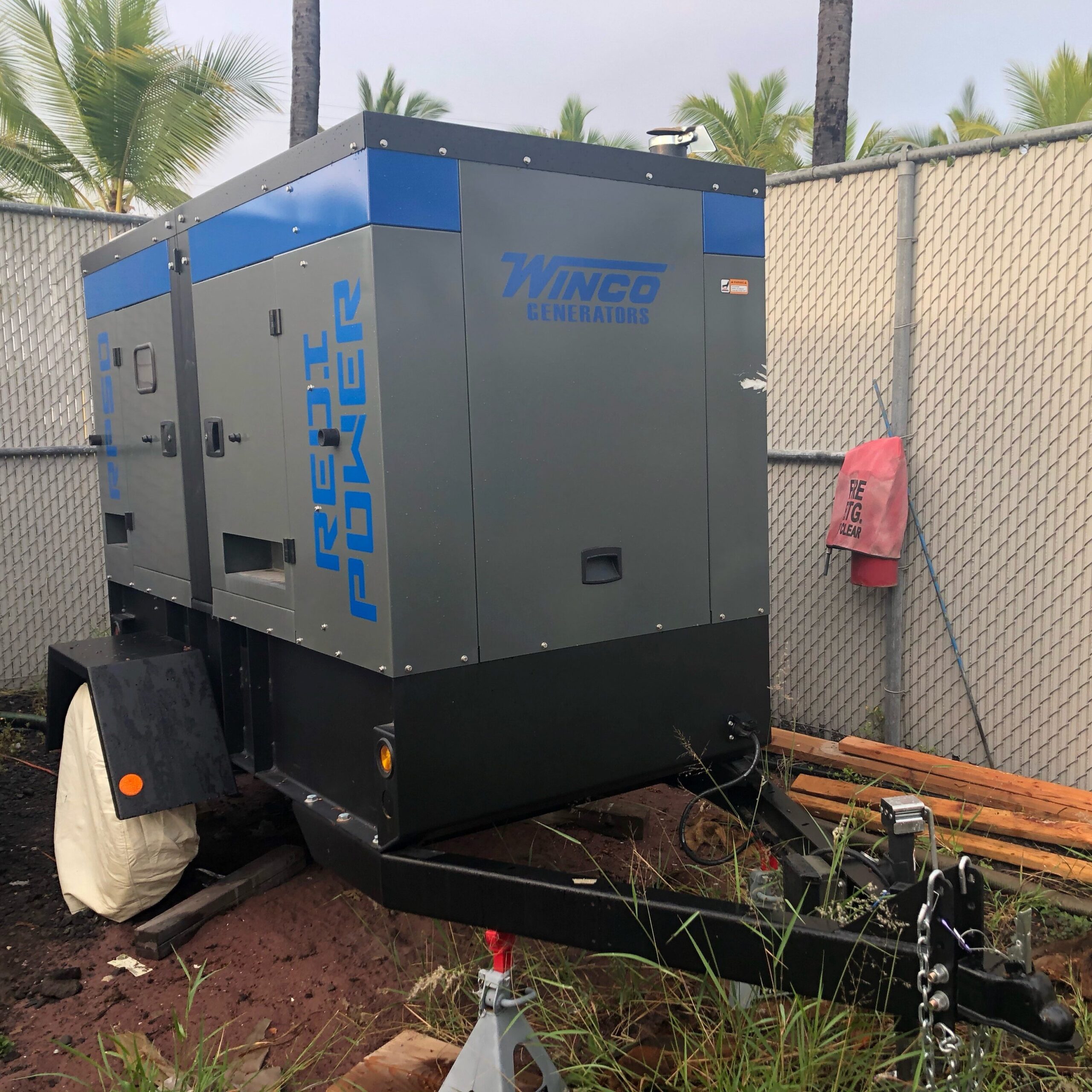 Municipalities, farms, and businesses could benefit with a prime-powered, mobile generator. Mobile generators are able to provide power for larger, critical applications, and can be taken to the exact location.
Municipalities, farms, and businesses could benefit with a prime-powered, mobile generator. Mobile generators are able to provide power for larger, critical applications, and can be taken to the exact location.
The season has already been busy with storms, stay safe!

